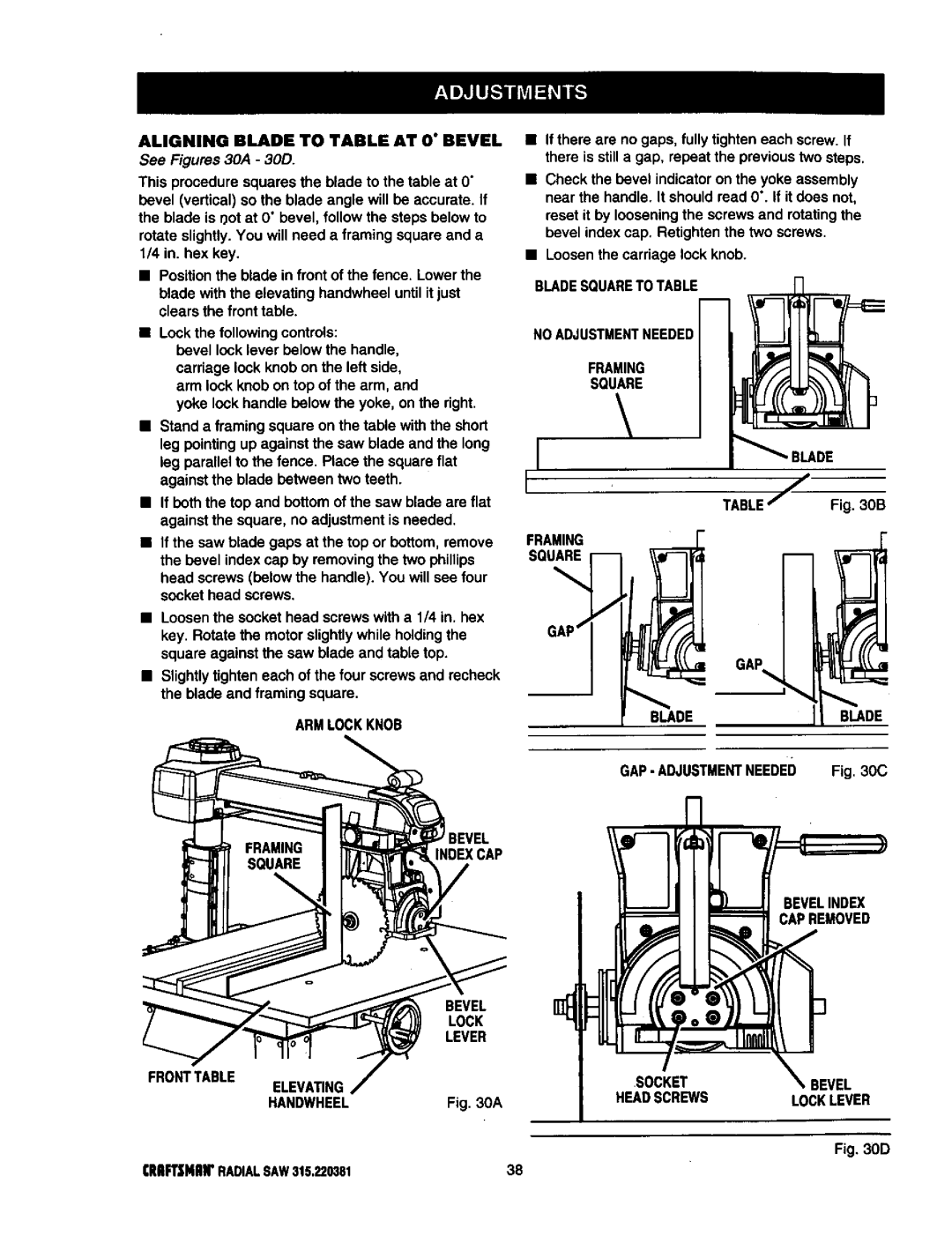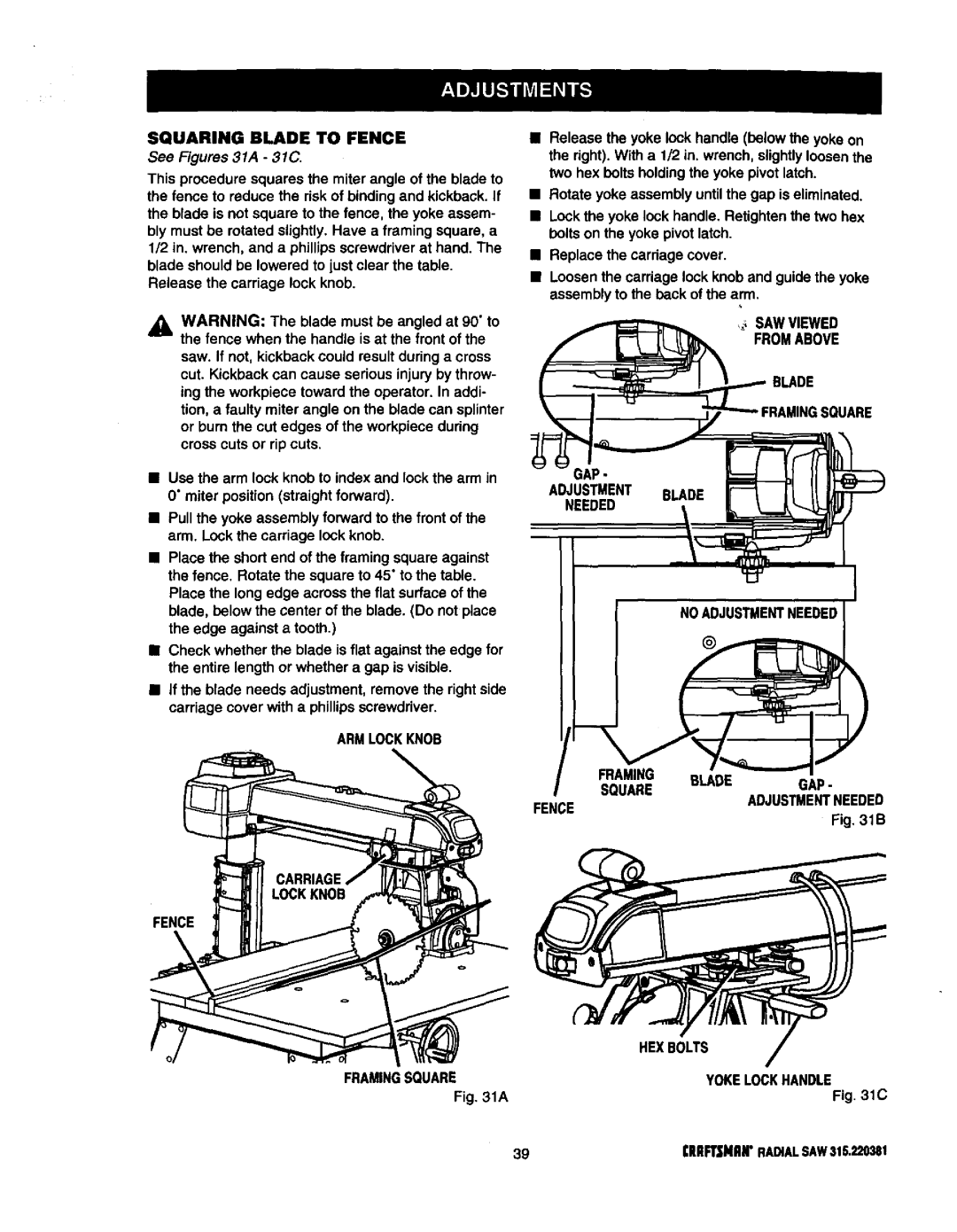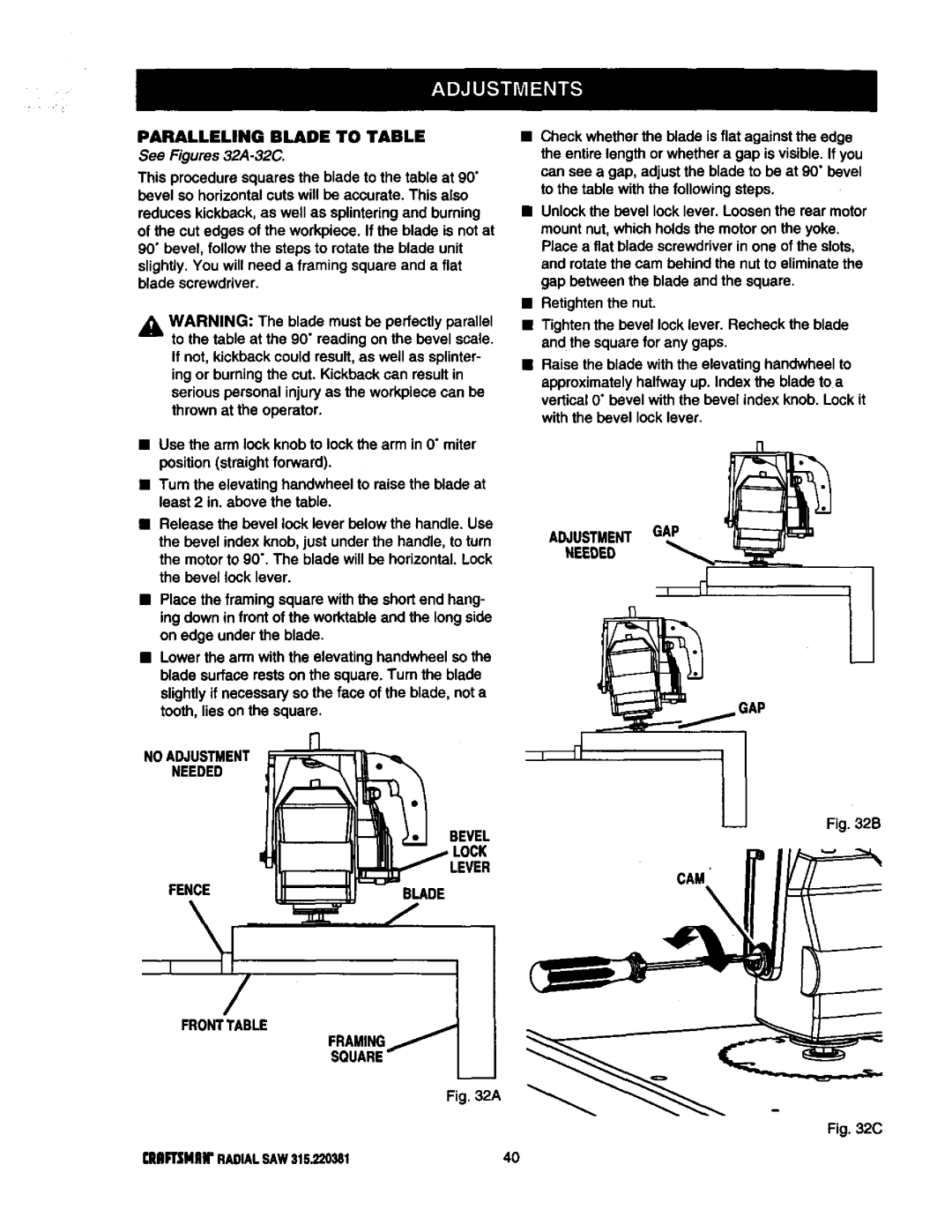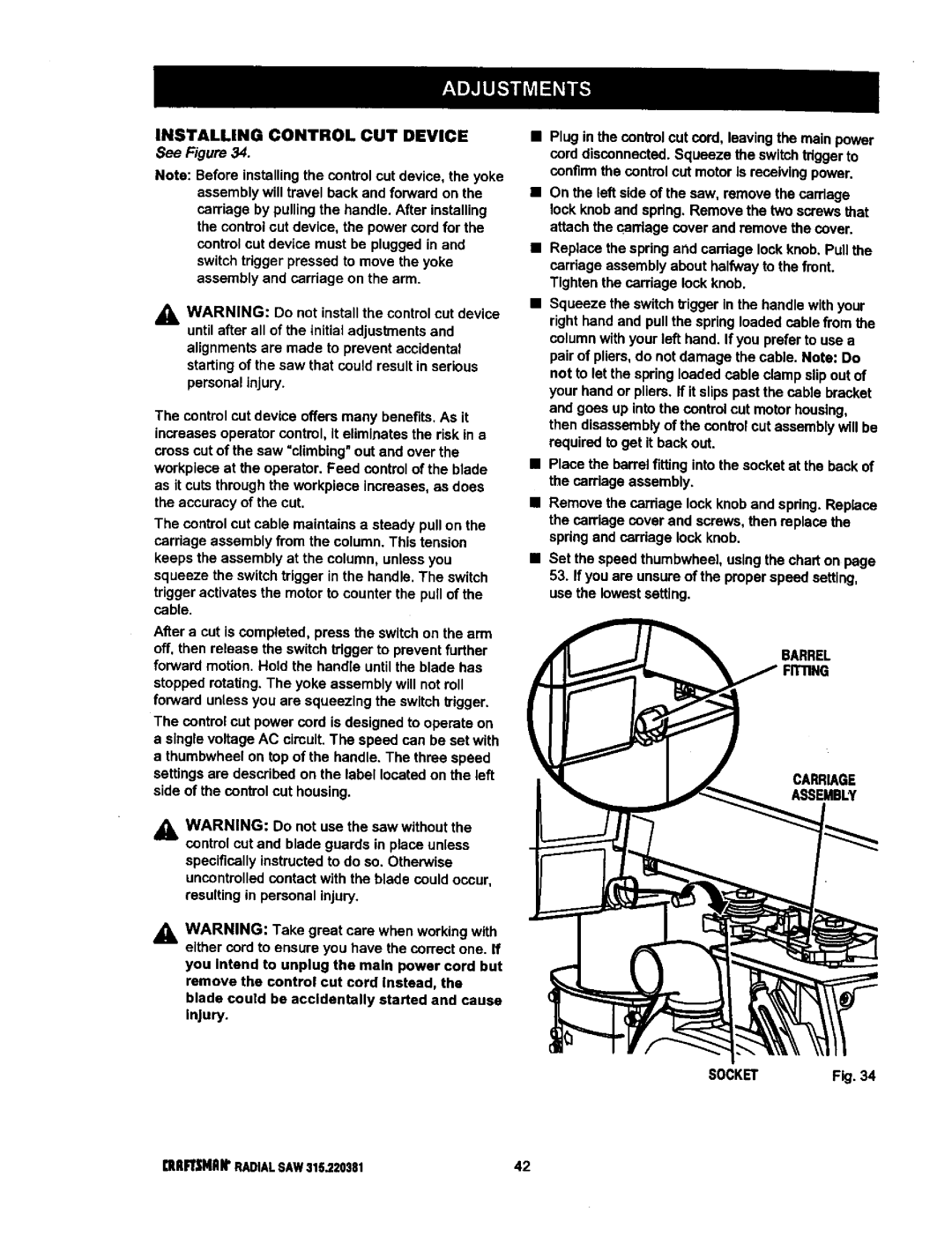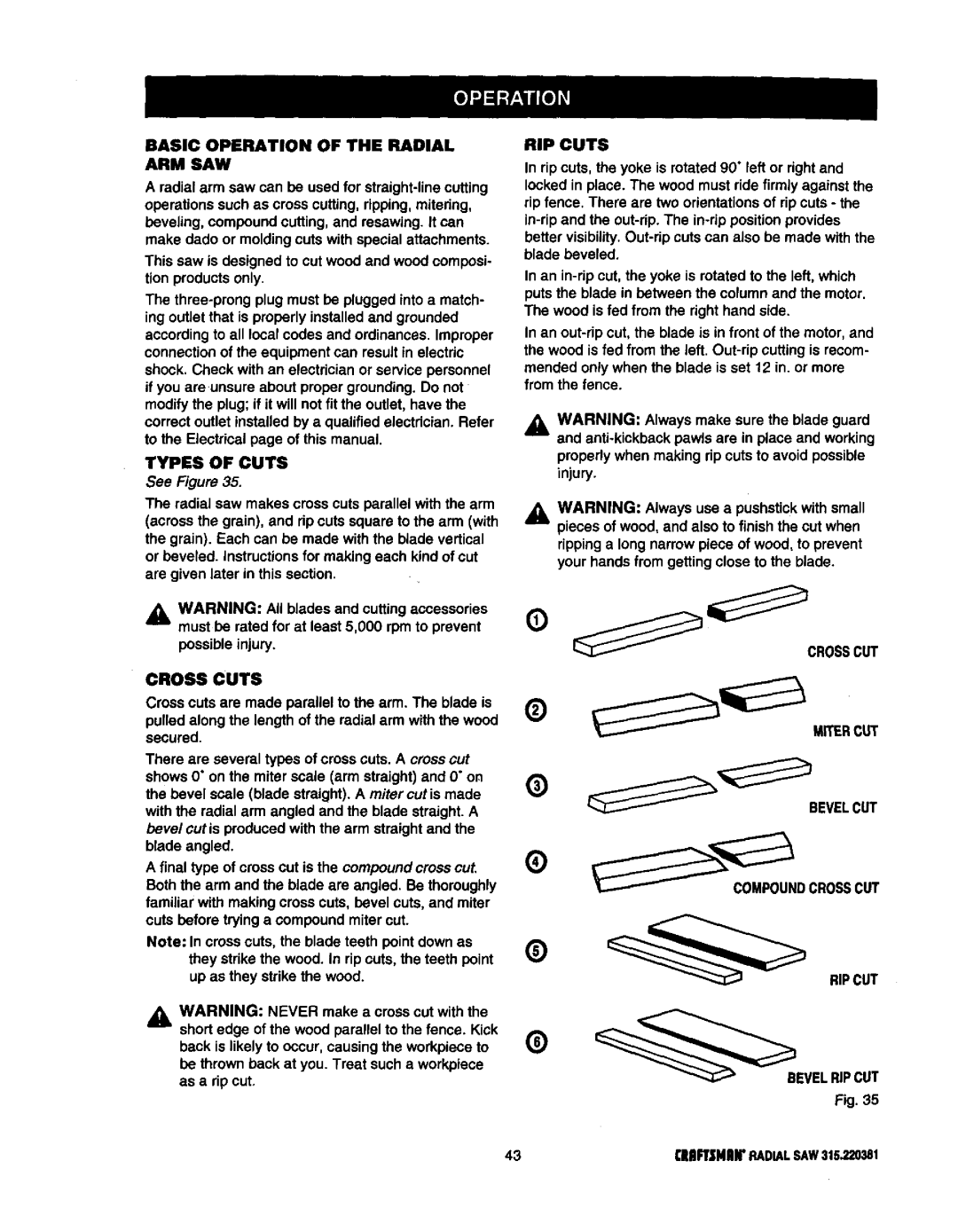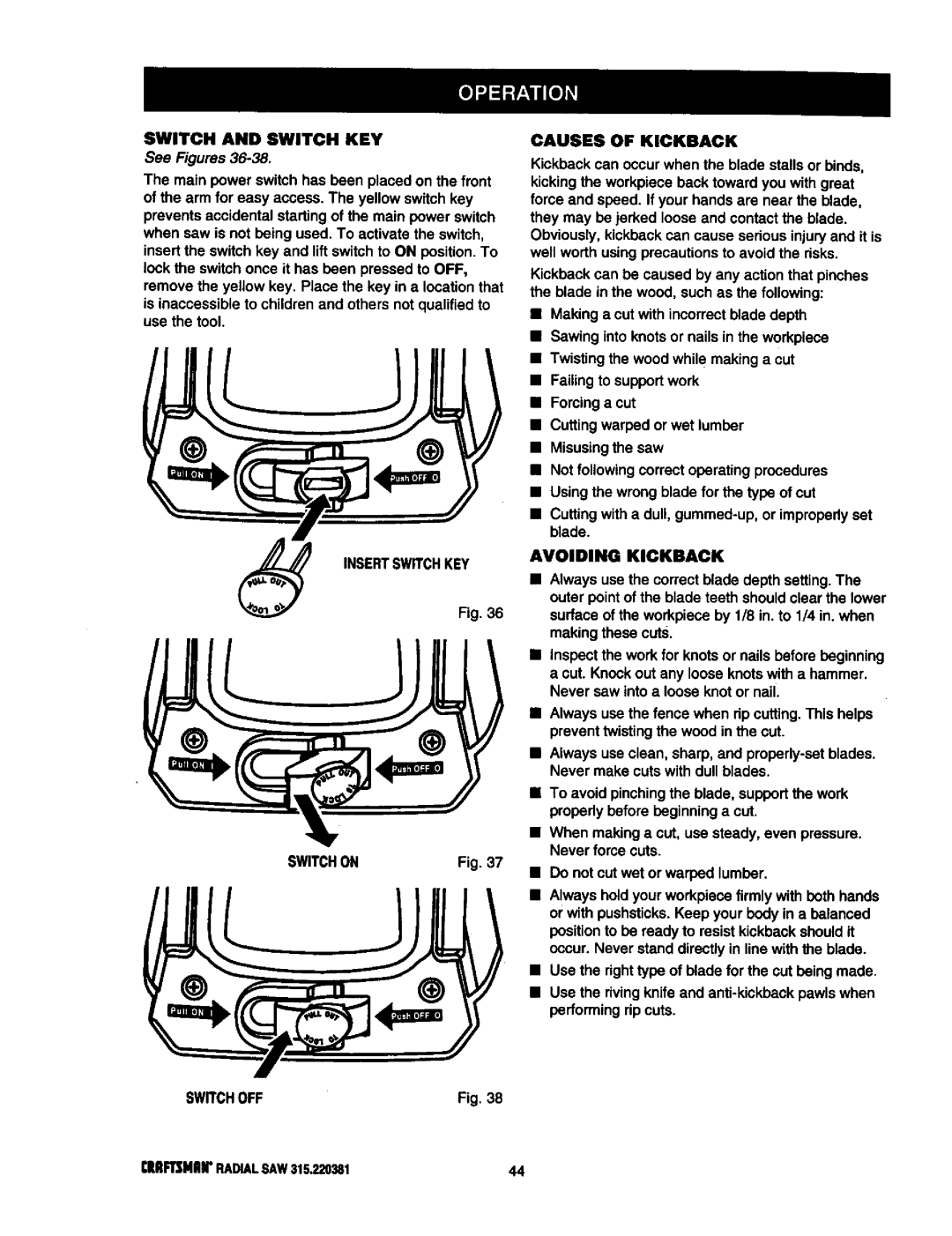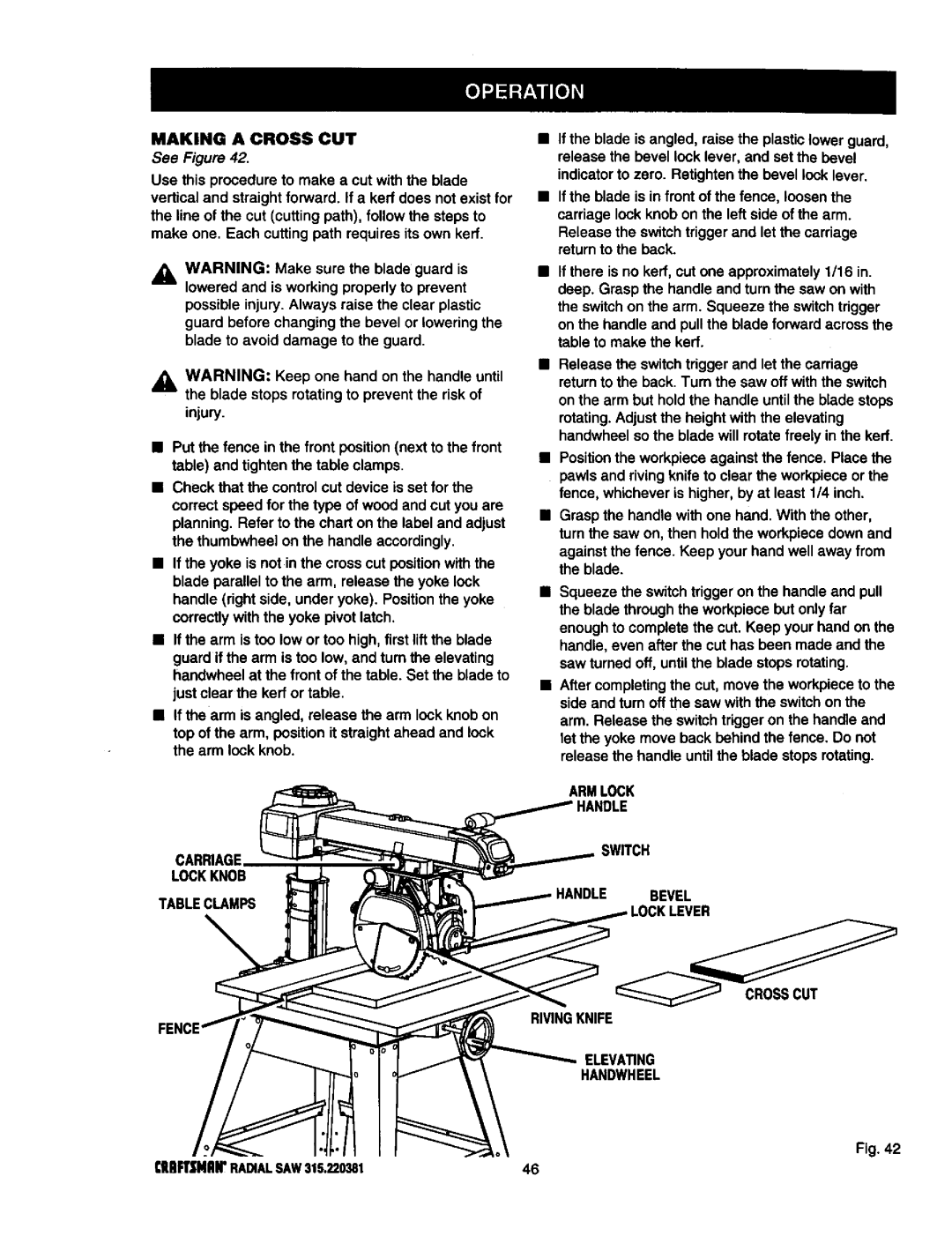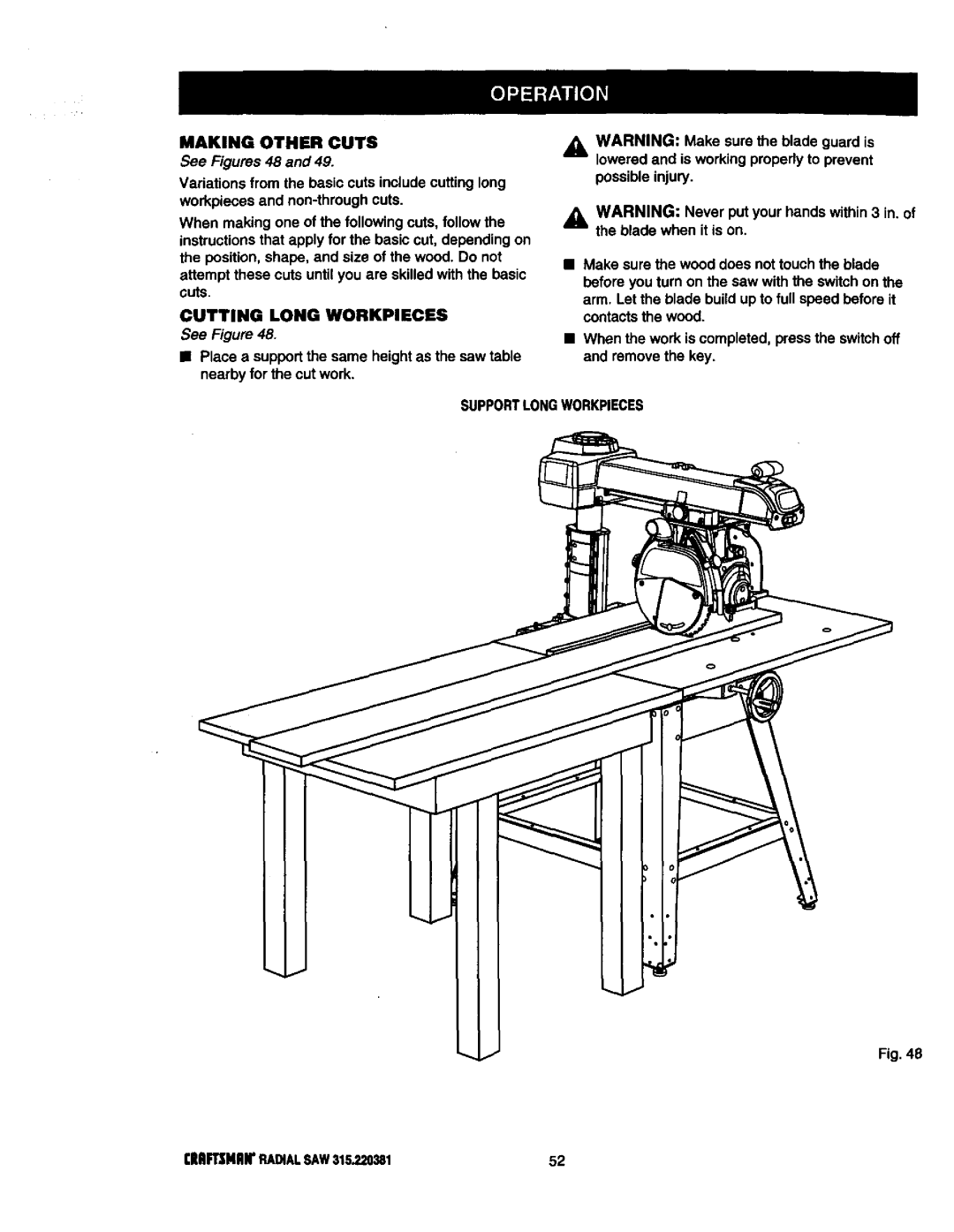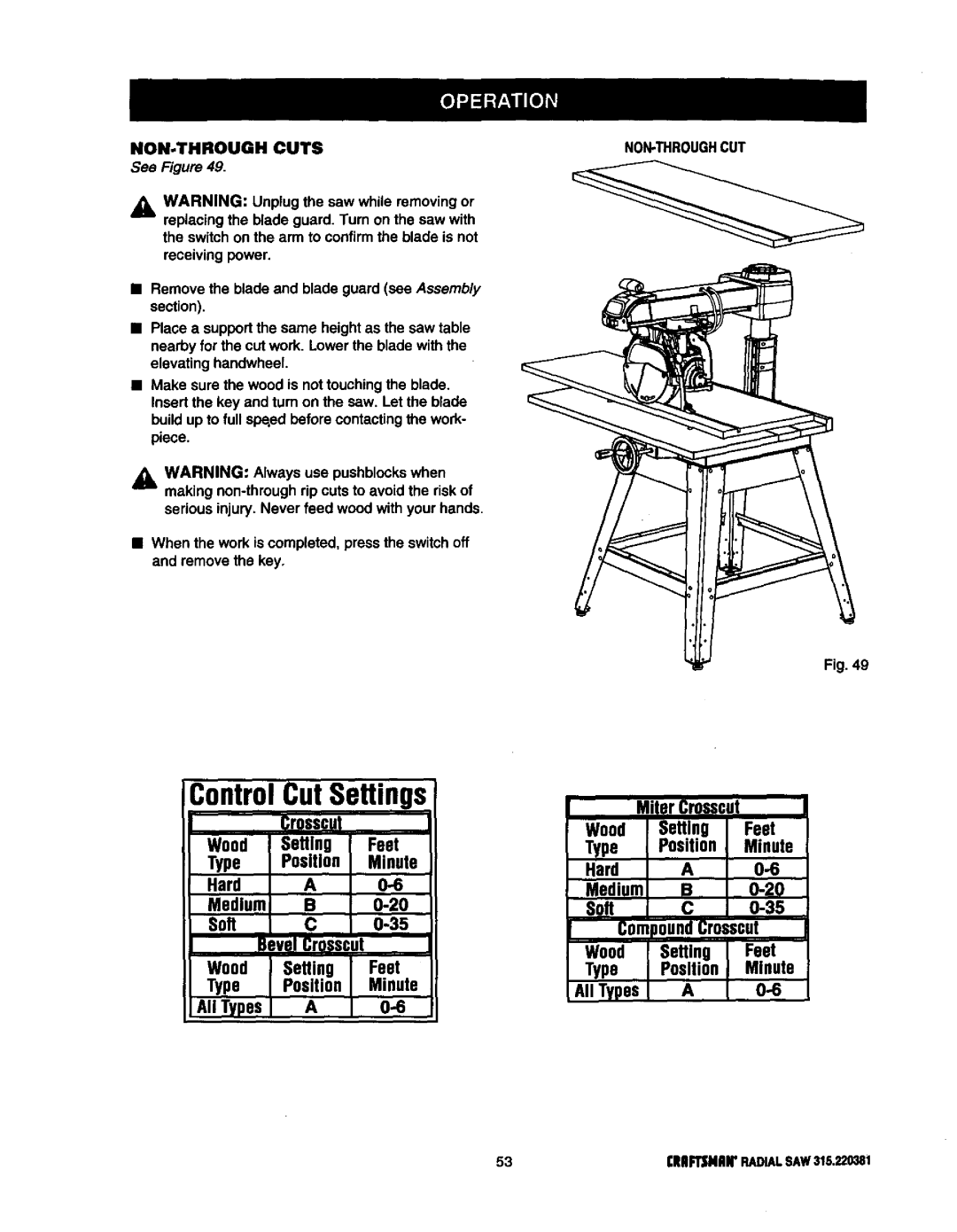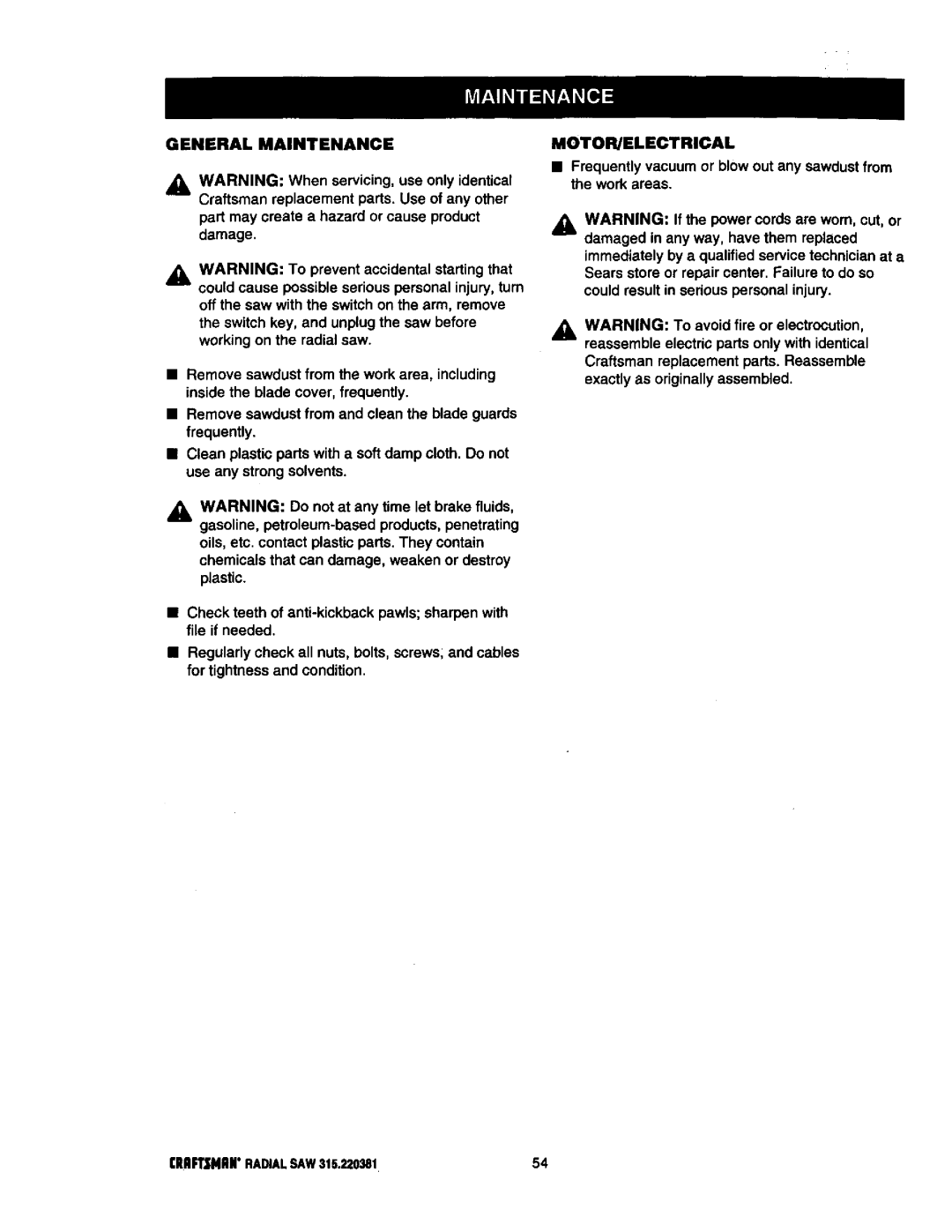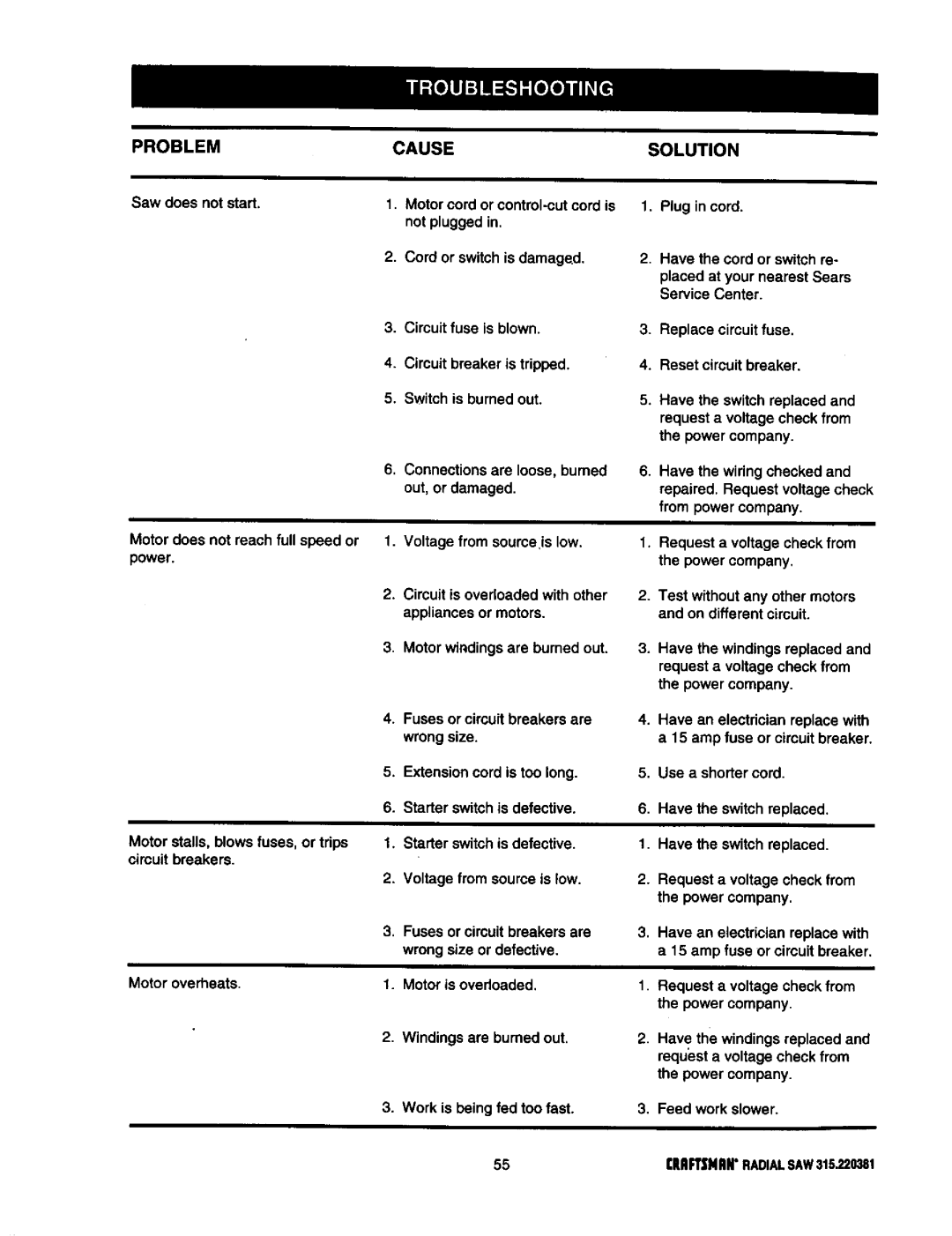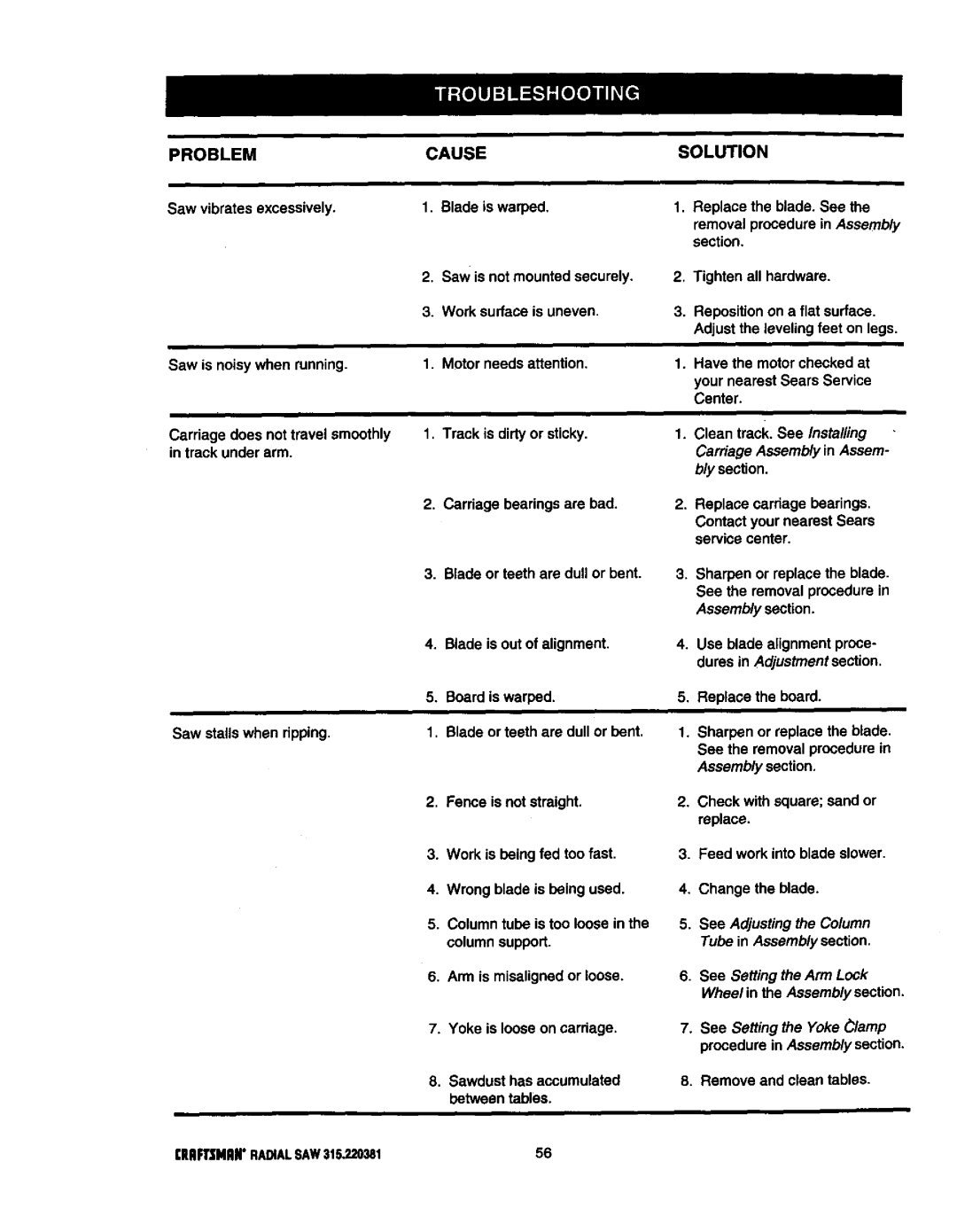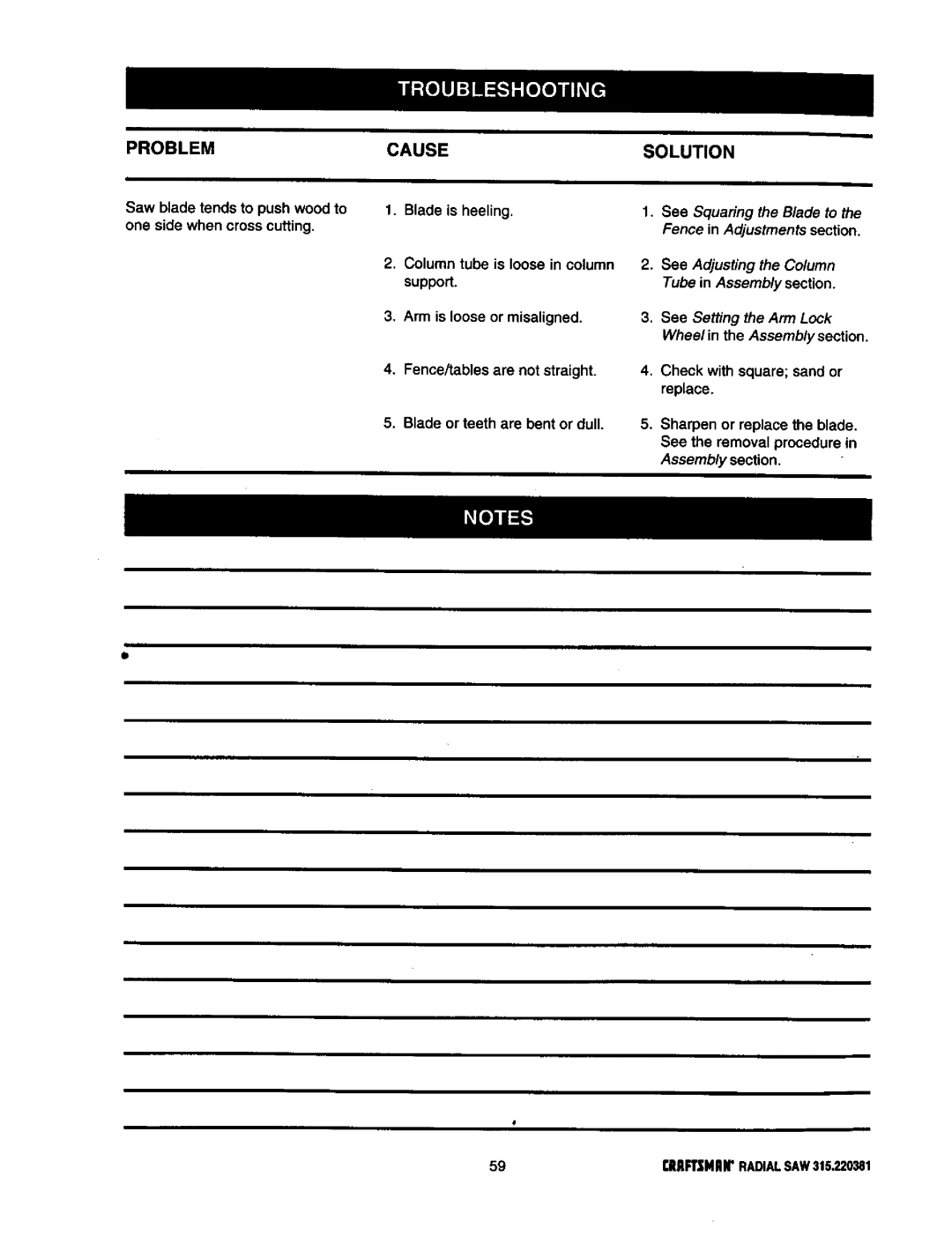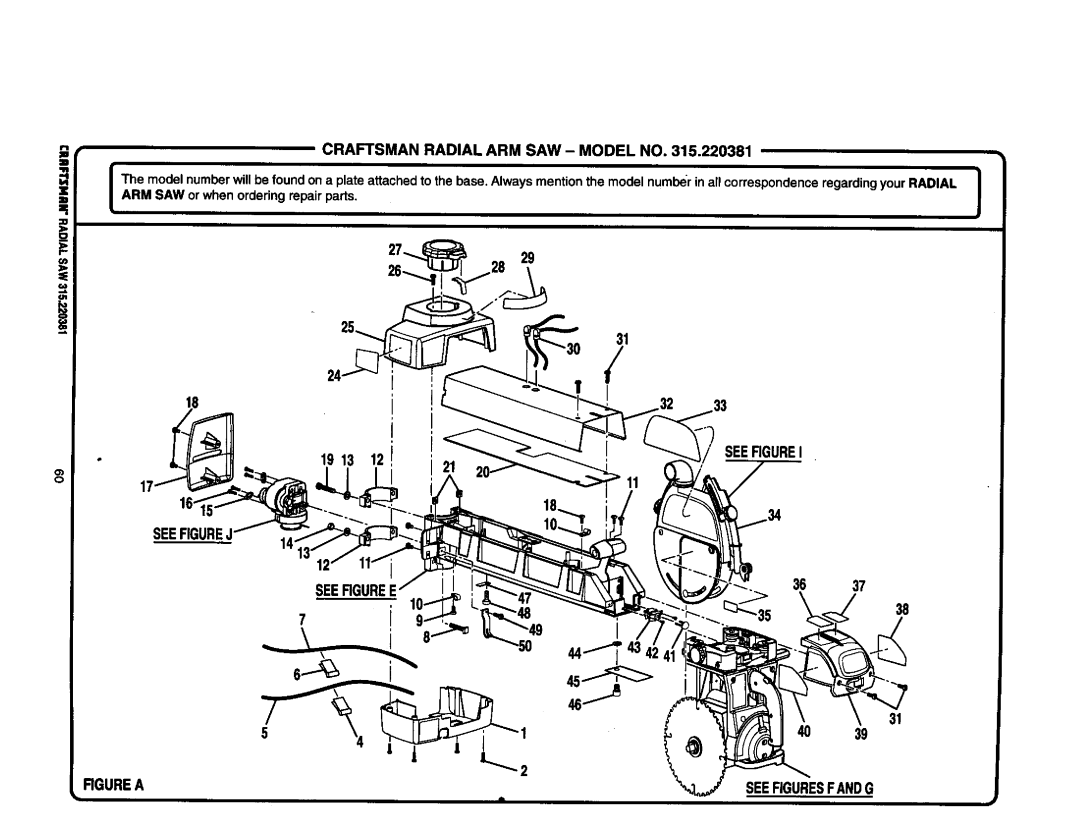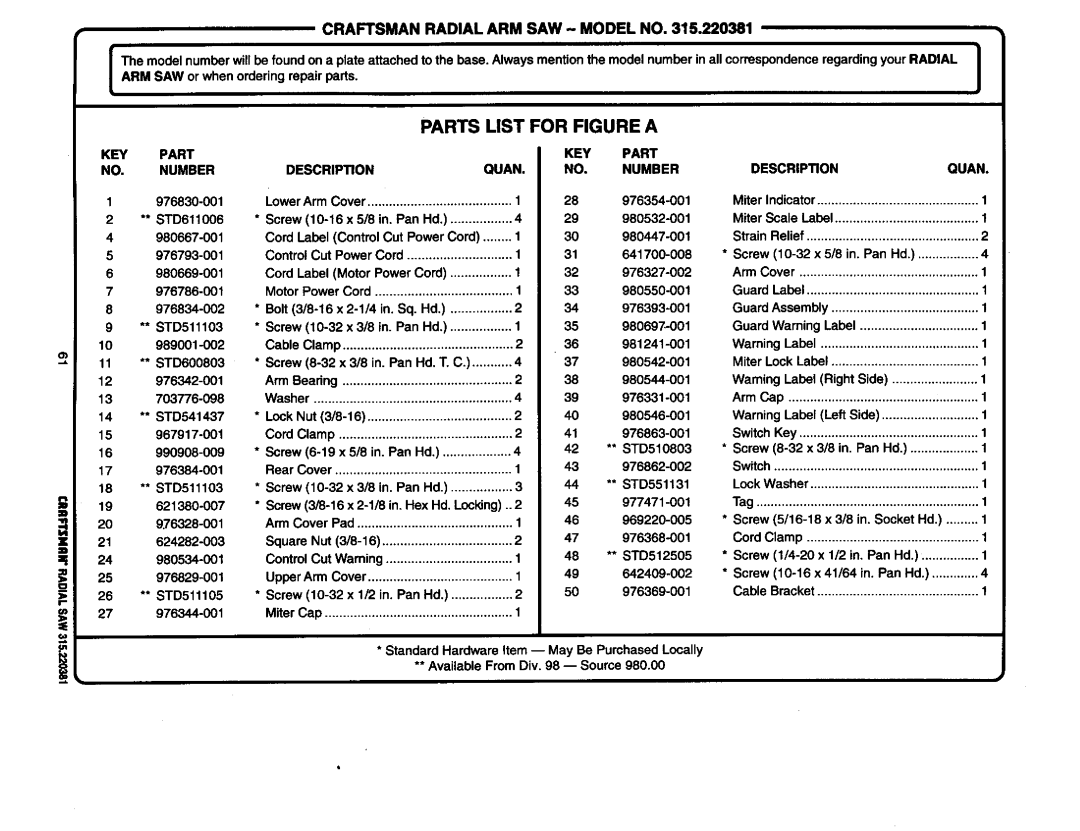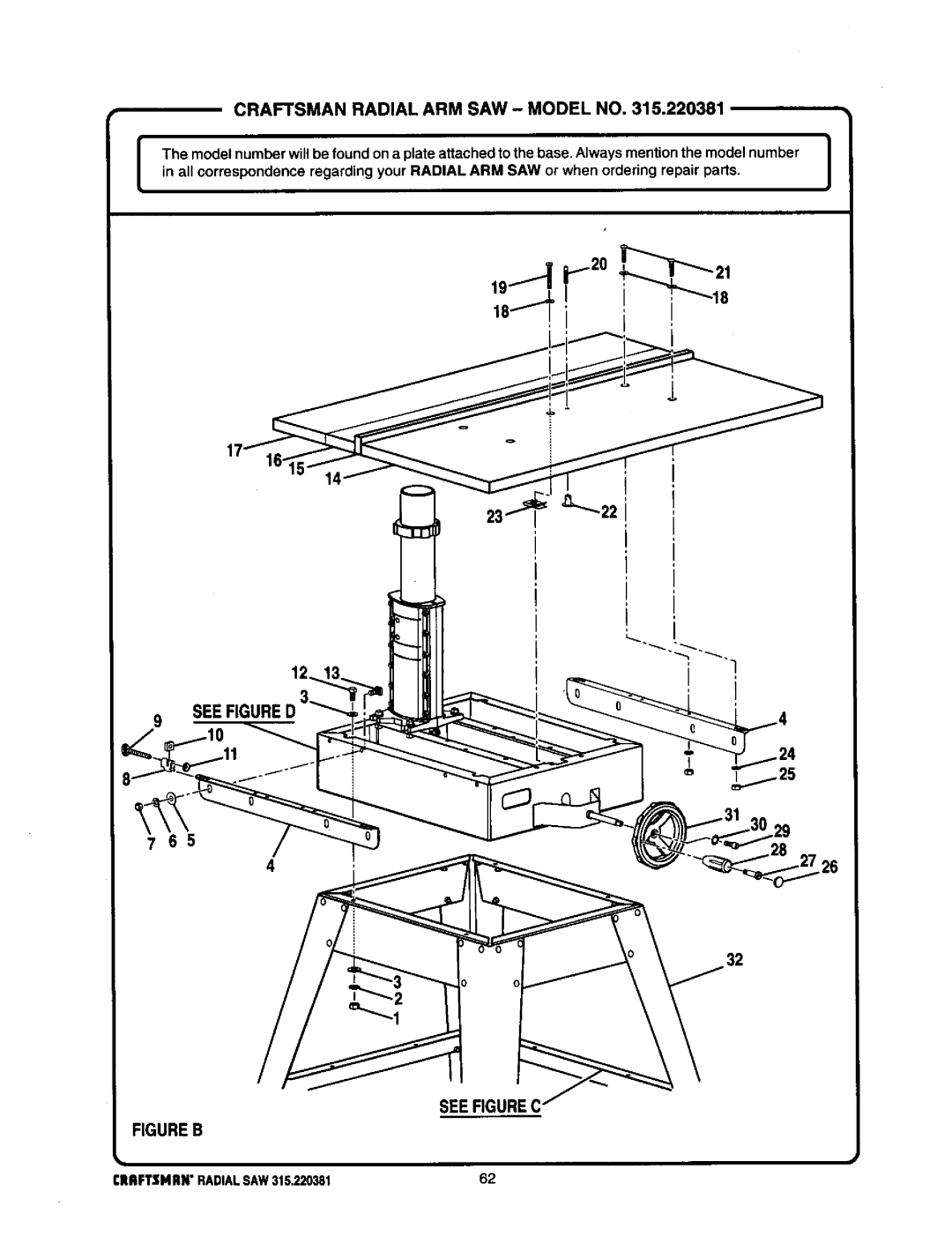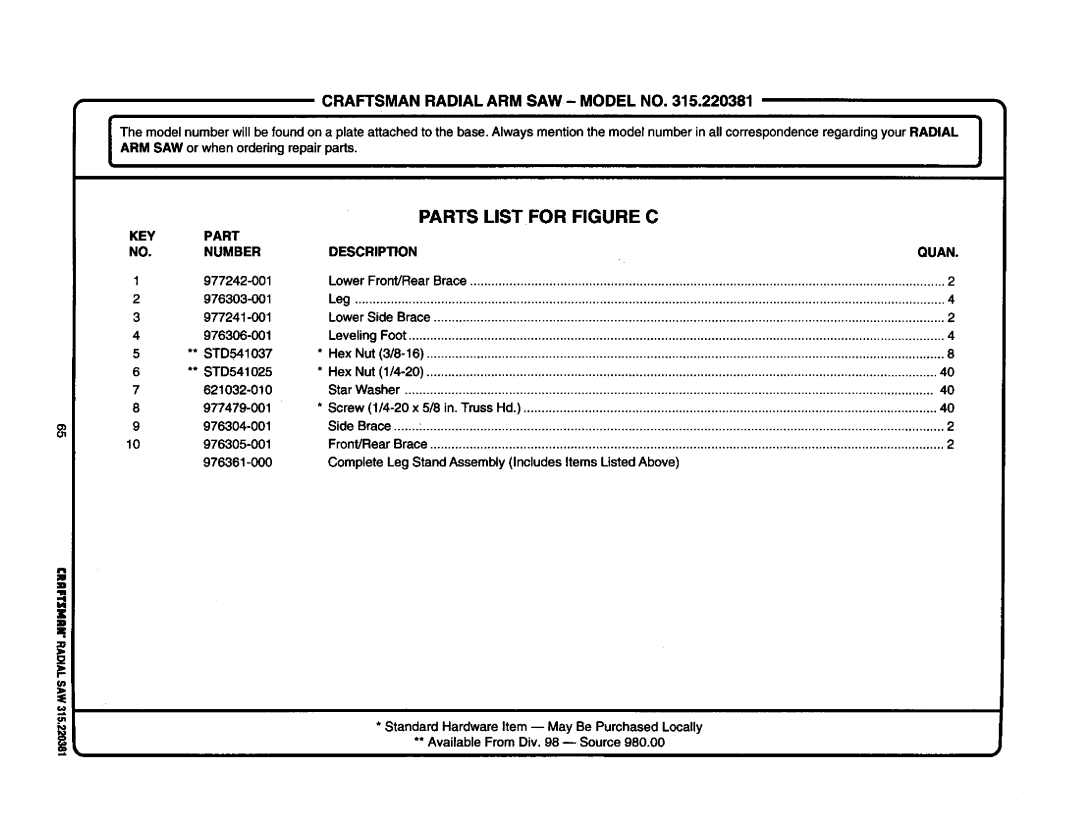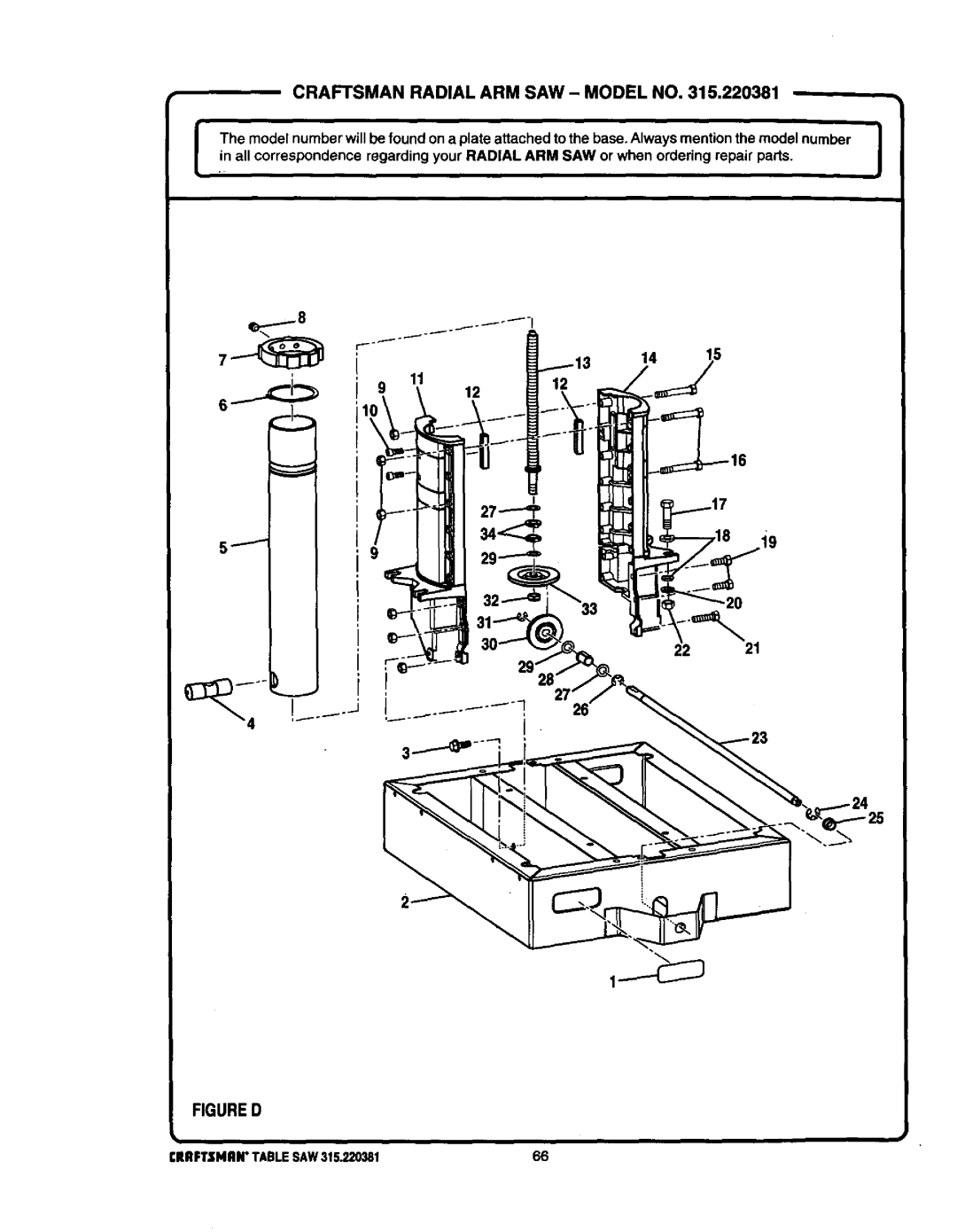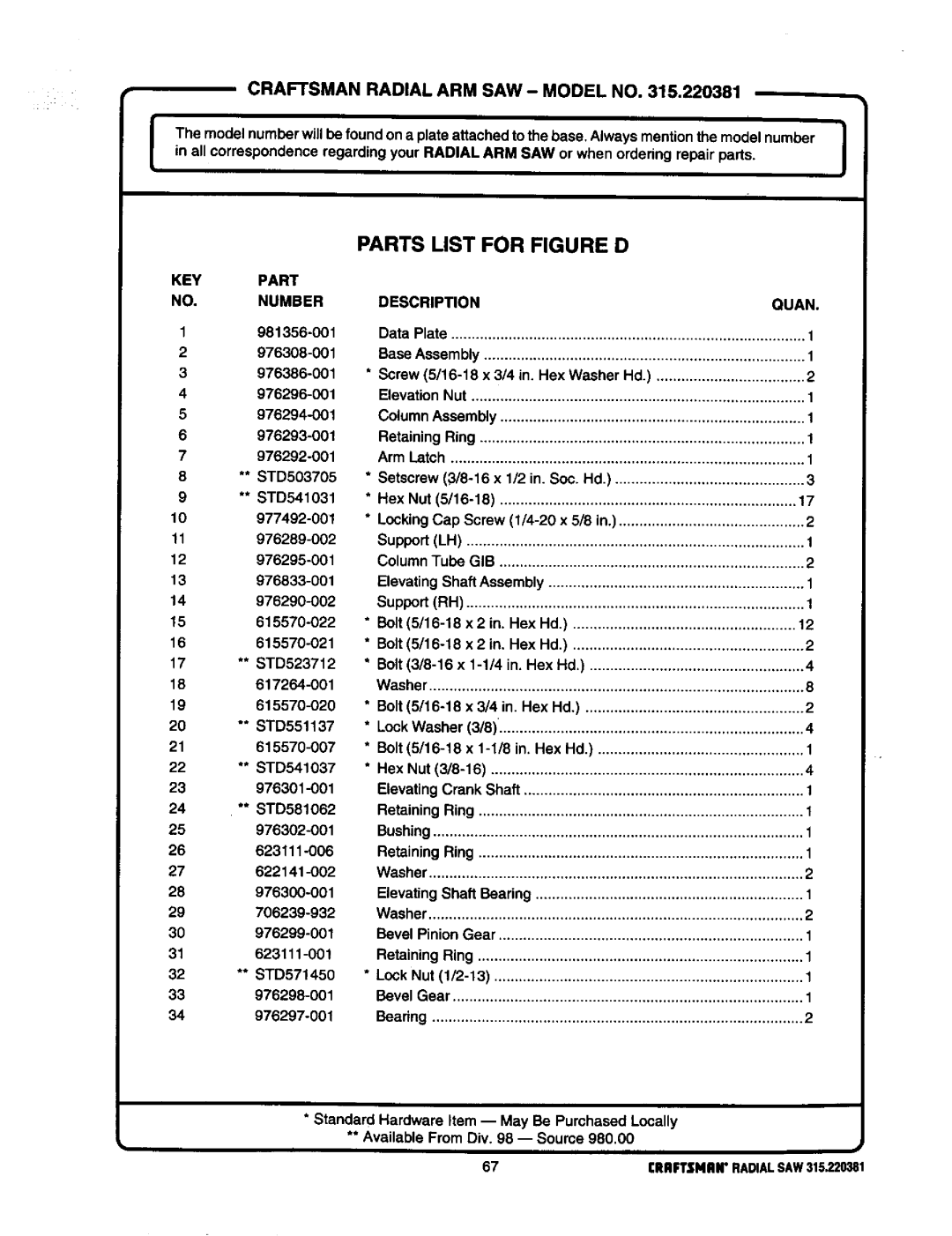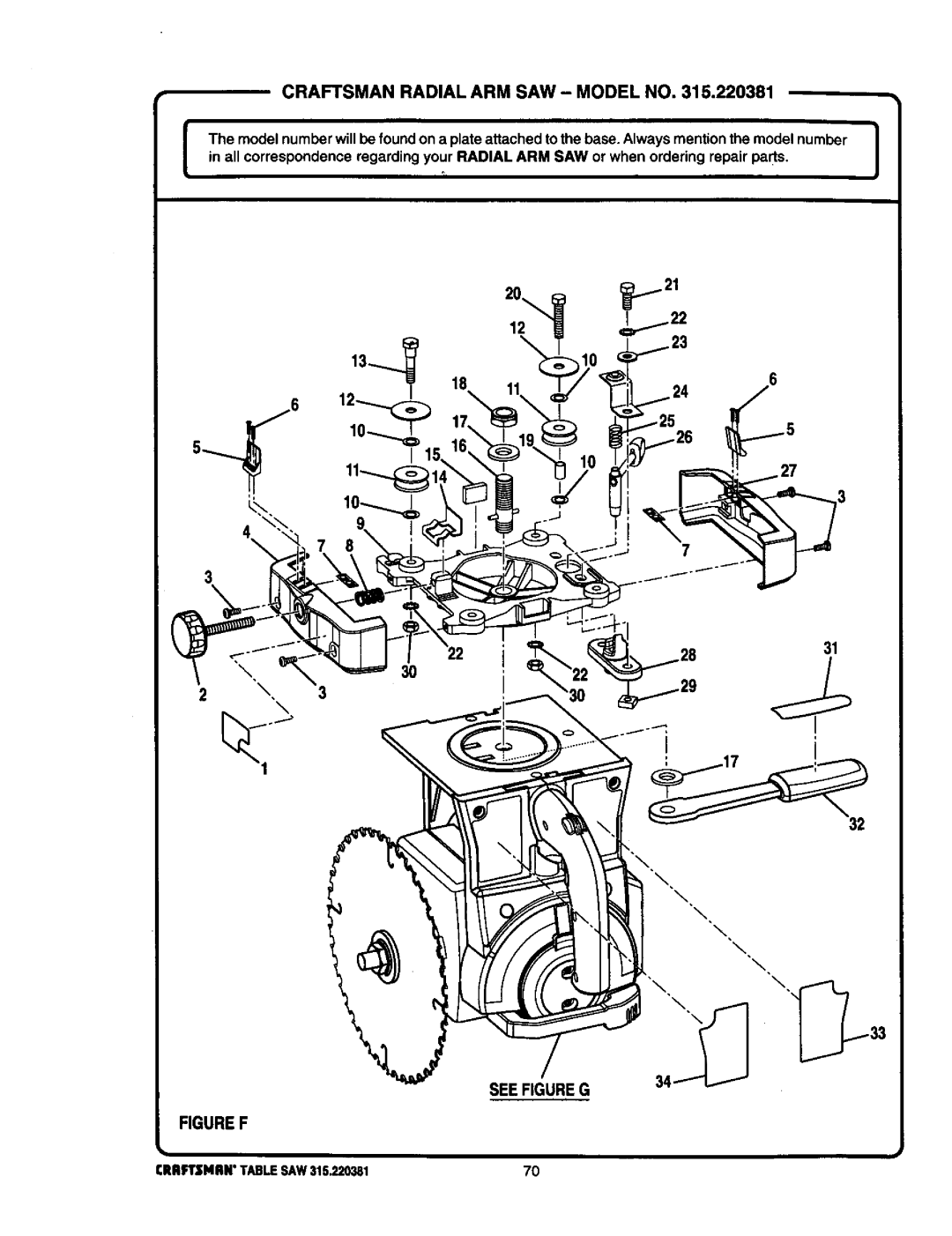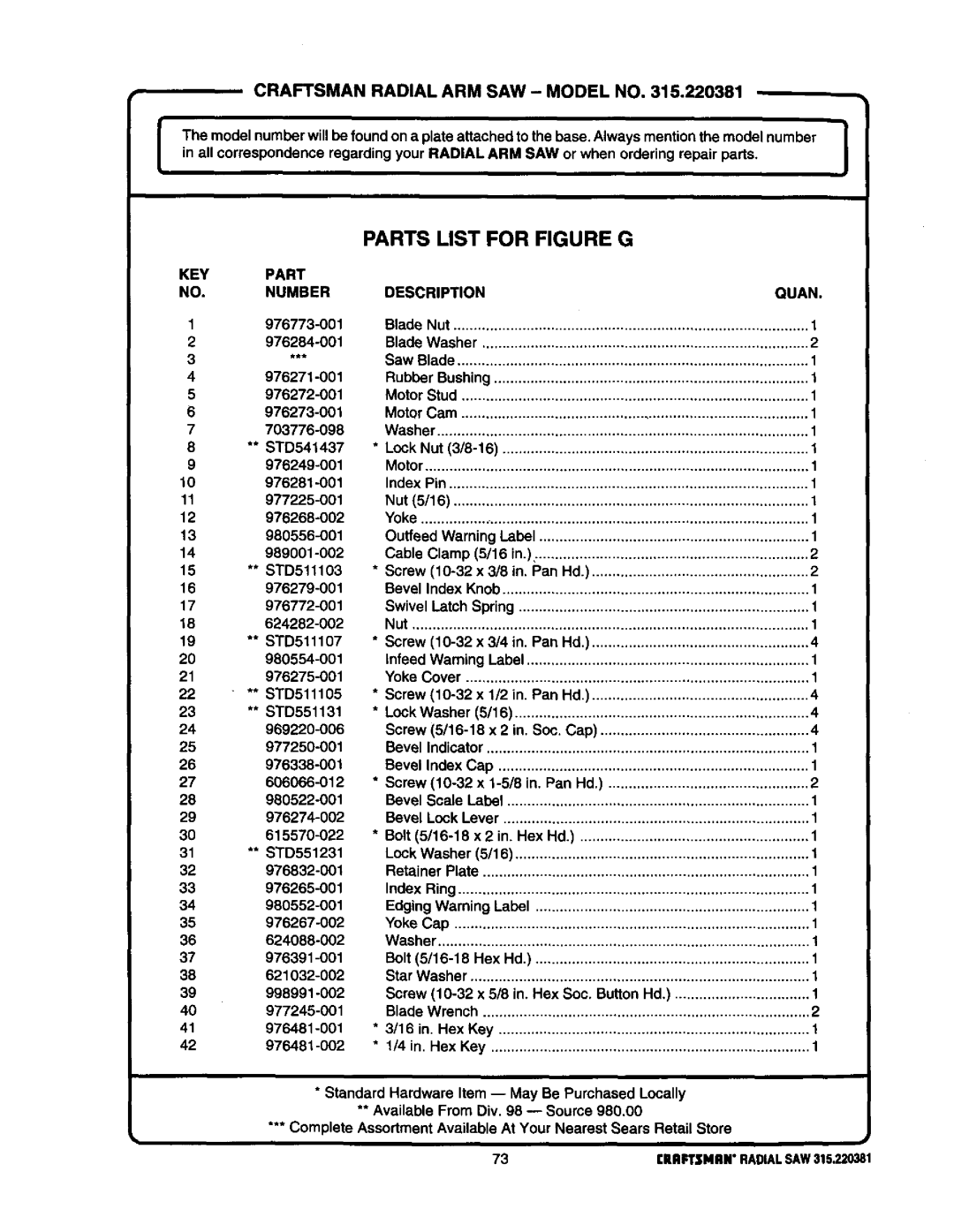
RIP CUT HAZARDS AND PRECAUTIONS
Two hazards are specificallyassociated with rip cutting:outfeed zone and wrong way feed,
In the ouffeed zone (behind the blade), the blade teeth point down. The slightest contact while the blade is stillspinning can snag clothing, jewelry, the work- piece, or even skin, causing serious personal injury.
Wrong way feed occurs when the workpiece contacts the blade from the ouffeed side. It is very hazardous and willjerk the workpiece violently. You could be cut if you are holding the workpiece.
,_k WARNING: Failure to observe any of these precautions can result in serious injury.
•The first precaution is, of course, simply to stay completely away from the ouffeed zone. Keep hands away from the outfeed zone.
•Point the
•Set the riving knife to just clear the table.
•Set the hold down in front of the blade to just clear the workpiece.
•Start and finish your cut from the infeed side.
•Push the workpiece past the pawls with push- blocksand pushsticks to finish the cut.
•If the blade jams, turn the saw off with the switch on the arm, remove the yellow key, and wait for the blade to fullystop before freeing it.
•Make sure the blade is parallel to the fence and the workpiece is not warped or twisted.
•Make sure no pressure is applied to the workpiece on the ouffeed side.
•Make sure the blade guard is lowered and is working properly.
•Always set up the workpiece so the wider part of the wood is between the blade and the fence. This
stabilizes the workpiece better.
•Do not release the workpiece until it has moved past the pawls. Keep pushsticksfirmly in place.
•Use pushsUcksand pushblocks, not your hands, when the trailing edge of the workpiece is within
3 in. of the blade. If the blade is set 2 in. or more from the fence, use a pushstiok. Use a pushblock and auxiliary fence when the blade is between 2 in. and 1/2 in. from the fence. (If the cut is narrower than 1/2 in., use a different saw.) For large panel rip cuts, use a featherboard instead of pushblocks or pushsticks.See the section on CuttingAids.
SETTING UP A RIP CUT
See Figure 46.
Aprecise and safe rip cut requires a careful set up. Before setting up for
Check for stability, visibility,and control. Test which will give the best pushstickclearance.
Instructionsare given for an
•Insert a solid fence with no kerfs. Use an auxiliary fence if the blade will be set only 1/2 in. to 2 in. from the fence. Tighten the table clamps,
•If the arm is too low or too high, first liftthe blade
guard if the arm is too low, and turn the elevating handwheel at the front of the table. Set the blade to
just clear the kerf or table.
•Change the blade angle if needed. Raise the plastic lower guard to keep it from jamming, release the bevel lock lever, and set the bevel indicatorto zero. (For a bevel rip cut, set the bevel Indicator to the desired angle.) Test the clearance on the guard. Retighten the bevel lock lever.
ELEVATING
HANDWHEEL
INFEEDFOR
IN RIPCUTTING
Fig. 46
I'IIIIFTSMIIIPRADIALSAW 315.22038150
